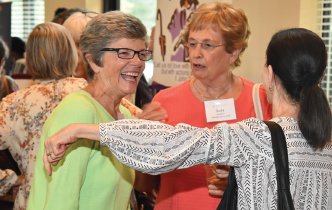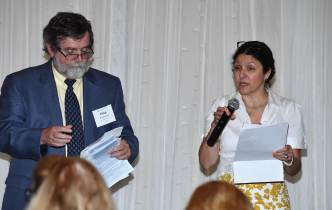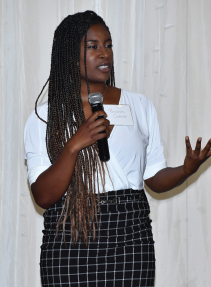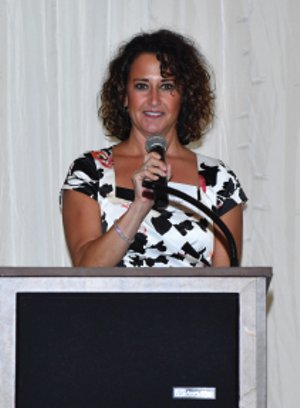By Christine Bervid
Let’s start at the dawn of philanthropy in fledgling America. In 1643, when the colony of Maryland was only nine years old, Lady Ann Moulson (née Radcliffe), living in London, was approached by a man who traveled across the Atlantic Ocean to ask her to give to the infant Harvard College for a scholarship to aid poor scholars. Her donation of 100 pounds is considered to be the first significant philanthropic gift in this country by a woman.
Flash forward a few centuries later to 1893. Mary Elizabeth Garrett donated more than $300,000 for the new medical school at Johns Hopkins University, with the condition that the university admit women. This support continues to be reflected in philanthropic giving by women today, throughout Anne Arundel County and on the Eastern Shore.
How Women Give
In 1997, visionaries Sondra Shaw-Hardy and Martha Taylor, founded the Women’s Philanthropy Institute (WPI), the only center located at a research university (Indiana University) with the dedicated mission of understanding the connections between gender and philanthropy. Through rigorous social science research, they established two important points that are now widely accepted; women have a distinct and different approach to giving and that, as a gender, they were not being cultivated as givers.
Debra Mesch, president of the WPI until August 2018, wrote a 2016 Wall Street Journal article with a captivating title, “The Gender Gap in Charitable Giving.” She began with the statement, “Many nonprofits have never tailored fundraising efforts to reach women.” By listing several key findings, she explained why they should and provided a stunning portrait of how men and women give differently:
Women are more likely to give, and to give more, than men in similar situations (i.e., same age, same income level). In one study, Baby-Boomer and older women gave 89 percent more to charity than men their age, and women in the top 25 percent of permanent income gave 156 percent more than men in that same category.
Even though women tend to have fewer available resources as they age (generally earn less, less retirement, greater life expectancy), they are giving larger portions of their wealth to charity than men.
In analyzing why these differences exist, WPI research shows that “women tend to be more altruistic and empathetic than men, partly because of the way men and women are socialized regarding caring, self-sacrifice, and the well-being of others.” What style of appeal motivates men (“being in the man’s self-interest or as a way of maintaining the status quo”) versus women (who “tend to give to promote social change or help others who are less fortunate”).
Differing attitudes toward money is another possible reason for the difference in giving. “For men, money may represent power, achievement, or prestige, while women tend to view money in terms of personal security, freedom, and a way to achieve goals.” This finding is consistent with a 2013 U.S. Trust survey on women and wealth that found “women are nearly twice as likely as men to say that giving to charity is the most satisfying aspect of having wealth.”

Professional volunteer and well-known Annapolis philanthropist Anna E. Greenberg confirms many of these differences. She says women “involve the whole family” and that giving is “not a business deal like with men” (i.e., I will give to your charity if you give to mine). She believes that women can tell the story of need more convincingly than most men, precisely because they make their appeal more emotional. In fundraising, you are trained to “get to their heart” and women can use this type of intimate language very effectively.
Greenberg, who charmingly says her volunteerism is “my rent that I pay for my time here on earth, and it’s getting very expensive,” has been recognized with many honors. They include being named one of Maryland’s Top 100 Women (1999), What’s Up? Media’s Women Who Make a Difference (2006), and Capital Style’s Women of Year (2012) for her work for many philanthropic organizations including the Caritas Society and the St. John’s College Board of Visitors and Governors (a rare honor for a non-alumnus), the Annapolis Symphony, the Library Foundation, and Scholarships for Scholars, and Partners in Care.

Greenberg is the perfect person to explain how women’s role in philanthropy first began to change. Back in the 1960s, both the United Jewish Appeal and St. John’s started a women’s division so that women could give in their own name. Before that time, giving was men to men and women were restricted to influencing giving but did not give on their own (with some notable exceptions).
Members of Anne Arundel Women Giving Together celebrated philanthropy and fellowship at
brthis year’s grant showcase.
Greenberg was one of the 10 women who founded Anne Arundel Women Giving Together (AAWGT). What are the biggest changes she has seen in her decades as a philanthropist? “Women are giving money in their own name now” and “there is more structure in place [in charitable organizations], so the executive director does the work and the president raises the money [versus in the past when the president did it all].”

Why is it important to understand the unique aspects of women in philanthropy? “Let this be a wake-up call to nonprofits everywhere,” Mesch says. “A better understanding of gender’s role in charitable behavior can help organizations engage men and women more effectively—according to how they wish to be engaged.”
“If a woman decides to become a philanthropist, she wants her gift to represent her values and make a difference.” —Betsy Chotin, Anne Arundel Women Giving Together Presiden
“A Cultural Phenomenon”
According to the WPI, as quoted in InsidePhilanthropy.com, Giving Circles are one of the fastest growing and most varied of the women’s giving models though their structure can range quite widely from “four or five women seated around a kitchen table” to extremely sophisticated, structured, and formal programs. The concept behind Giving Circles, no matter what the composition or disposition, is that pooled giving has a greater impact on making a difference in the community.” They called Giving Circles “a cultural phenomenon”—a phenomenon
brthat appeals strongly to women.

How popular are they? Two years ago, the Collective Giving Research Group (GCRG), supported by the WPI, found that the “amount of money in Giving Circles (GC) has tripled over the last decade, with an estimated $1.29 billion being granted overall.” The National Center for Charitable Statistics states that “the average charitable deduction across tax returns filed for all income levels is about $1,000 per person.” The CGRG found that individuals in GCs had a median donation value of $5,000. Another positive result was that “more than one-third of those surveyed had been part of a GC for five or more years,” providing a dependable, recurring source of philanthropic giving.

In 2017, the same research group issued the “The State of Giving Circles Today” noting 10 key findings about GCs; number three was that women continue making up the majority of GC members and according to their survey, “70 percent of all groups reported that women are more than half of their membership. In contrast, in only about 7.5 percent of groups were men the majority of members.”
At the 2018 AAWGT Grant Showcase, last year’s grant recipients shared their stories of how the funds were used and enhanced their programs.
Founded in 2006, the Anne Arundel Women Giving Together (AAWGT)—“The Giving Circle” as they refer to themselves—is the first Giving Circle in the county. This group of women sought a way to pool their financial resources with other women with the mission of improving lives of women and families by focusing on health and welfare, education, and the prevention and treatment of abuse. With this year’s awards totaling $105,136 at their May 2018 meeting (they give away an average of about $100,000 in grants per year), they pushed their total giving just above $1 million, a significant milestone.

The AAWGT focuses on three “I”s: Investing by pooling their annual contributions for “collective philanthropy,” thus multiplying the power of one by the power of many; Informing by holding in-depth education sessions highlighting issues in the county that require active attention and support; and Inspiring by encouraging their members to engage as leaders and philanthropists in the local community.
This motto “has allowed us to reach out to the public as well as to educate our members,” AAWGT President Betsy Chotin says. “Nobody makes anybody give their money away.

If a woman decides to become a philanthropist, she wants her gift to represent her values and make a difference. Collective giving allows each of us to increase our impact on the nonprofits that we have carefully vetted. Through informing ourselves and then choosing our investments, we inspire each other by having a positive effect on the lives of others in our community.”
With a current membership of more than 200, these women see their giving impact multiplied by hundreds of times more than their individual power to give. Membership is yearly and includes two levels: full at $575 for women over 40 and associate at $300 for women 40 and younger.
The majority of the money goes to the grant fund and is awarded in the year that the membership is paid. A portion of each membership goes to pay for marketing, member outreach events, education programs, and fund management fees to the Community Foundation of Anne Arundel County. The Foundation’s role is “to promote philanthropy, help to identify critical needs in Anne Arundel County, partner with donors to help them meet their philanthropic and financial goals, and promote collaboration to help strengthen local nonprofits.”

Each September, AAWGT hosts a grant showcase for grantees from the current year (this year, there were six charities) and the previous year to share how they have used the money. They also have a post-grant committee which is “relatively unique” according to past president Linda Eggbeer. President-elect Sue Pitchford (who begins her term in January) explains the dual benefits of promoting a mentor relationship and ensuring fiduciary responsibility.
Beyond their grant giving, Pitchford says that education is a unique aspect of AAWGT/The Giving Circle and that the group began educating women “before they even gave out their first grant.” They hold three events per year, open to the public, dealing with issues like the opioid epidemic or gaps in resources. They have held more than 50 education sessions in 10 years.
The educational events provide an excellent opportunity for women who may want to join a philanthropic group but cannot volunteer or give money. They can attend and learn about issues impacting the community of which they may not even be aware. “There are huge pockets of need,” Eggbeer says.
AAWGT’s experience reflects what is seen on the national level; women like to come together to give their money. AAWGT has a saying: “Come for philanthropy, stay for community.”
Engaging Future Generations
Another type of giving program that has special appeal for women is funding women and girls’ programs. As stated on their website, the Women & Girls Fund of the Mid-Shore “is part of a rapidly growing, nationwide movement of targeted philanthropic funds established by women to solve pressing community problems. By targeting local programs that address crucial and underserved issues impacting the region’s women and girls, the Fund takes a strategic approach to philanthropy that allows donor dollars to be leveraged effectively.” They highlight the fact that the needs of women and girls are underserved
brby traditional philanthropy.
The Women & Girls Fund is a grassroots initiative founded in 2002 in Alice Ryan’s living room by a group of women who wanted to pool their money. It distributed its first grants in April 2003 and, to date, the fund has awarded $553,072 to 84 nonprofit organizations on the Mid-Shore. The endowment’s value is currently over $1 million, which allows five percent of the income to be awarded in grants each year, totaling up to $50,000 annually.
Through the continuing support of individual donors and careful investment and management by the Mid-Shore Community Foundation (MSCF), the endowment continues to grow. One hundred percent of each donation goes in the endowment. The founder of the fund covers all administrative expenses.
“It is our mission to improve the lives of women and girls by supporting under-funded programs and initiatives through our grant awards, and facilitate collaborative efforts among existing agencies and programs,” Women & Girls Fund President Talli Oxnam says. “We feel it is important to cultivate a tradition of philanthropy for future generations and engage the philanthropic instincts of all women by providing venues in which their resources of money, time, and talent can be used to strengthen our Mid-Shore community.” The Women & Girls Fund pulls on a large volunteer base of 30 to 40 people. There is no membership fee and anyone can donate and/or volunteer for the organization.

“We feel it is important to cultivate a tradition of philanthropy for future generations and engage the philanthropic instincts of all women.” —Talli Oxnam, Women & Girls Fund President
Grants are allocated from available funds. If the fundable grants exceed the money they have to distribute that year, the Committee chooses those with potential to impact the greatest number of women and girls or those with the most compelling goals. The Grants Committee makes its recommendation to the Fund’s Board of Directors. All grants are then sent to the Mid-Shore Community Foundation for final ratification by its Board of Directors. At the Fund’s annual luncheon, the grantees (this year, there were 13) get an opportunity to meet—an excellent opportunity for networking by seating together groups that have never met, but who can help each other.
You may have heard the term “the third-generation rule” or the expression “shirtsleeves to shirtsleeves in three generations.” In terms of philanthropy, this means that younger generations can be unprepared to steward, manage, invest, or, in this case, donate the wealth accumulated by their family and, as a consequence, lose that wealth and its ability to do good.
The Women & Girls Fund has created a creative way to beat this so-called rule. The Daisy Fund, a special named fund which, beyond its crucial role in funding the endowment, cultivates a tradition of philanthropic giving in the next generation of women. At their 2018 annual luncheon, the Fund announced Daisy Fund grants of $3,150.
With a pledge of $10,000, a parent/grandparent can create a named fund for their daughter/granddaughter. Once fully funded, the income from the fund may be designated by the family to be awarded to selected grants every year. The Women & Girls Fund hosts annual events to educate young donors.
The Women & Girls Fund also has a speaker’s series every other year. In October, in collaboration with the public schools, they invited Rosalind Wiseman, best-selling author of Queen Bees and Wannabees (on which the movie and Broadway show Mean Girls were based) to speak at the Avalon Theatre in Easton about teaching respectful behavior, family dynamics, and strengthening girls.
Rise and Shine
It’s clear that women are both contributing and benefitting from their rise within philanthropy. In a 2017 InsidePhilanthropy.com article, the WPI predicted that the combination of two trends—“the growing financial muscle of women” as their control of multimillion-dollar firms and estates increases and “women’s growing leadership” on boards of nonprofit and businesses—would lead women’s role as philanthropists to increase exponentially. Women will not only become leaders in philanthropy, but their efforts will significantly “shape public policy for the common good.”
Bess Langbein, Principal of Due East Partners—a women-owned firm which advises nonprofits, businesses, foundations, and public agencies—and former executive director of the Community Foundation of Anne Arundel County, sees this as a time of transition, “not just seeing a transfer of wealth, but women stepping up in leadership,” training women to not only be philanthropic but philanthropic leaders.

Philanthropic groups serve a very important role. According to Langbein, “giving comes naturally, but philanthropy needs to be learned.” Giving Circles and other groups help people practice through their actions; it helps them experience the “transformational nature of giving.”
According to Inside Philanthropy, at the same time as the wealthiest philanthropists are giving more, the phrase “the democratization of philanthropy” has captured the minds of the philanthropic at all levels of wealth, promoting the idea that giving is not something for just the elite or super wealthy, but for all individuals who want to give back to the community.
As Langbein explains, they are “deploying their wealth in ways that reflect personal interests with a focus on community impact…inviting others to be part of the solution whether they bring dollars or not.”
Talking to Langbein about the many women she has worked with, it’s clear that this democratization means diversification too. Philanthropists today are not only women, but also women of color. She mentions several individuals who are part of the African American community and the Latino community that have given back to those communities through the creation of organizations to serve those communities directly or indirectly. Langbein cites the strength of African American sororities as a significant source of giving in the community; she says the Centro de Ayuda/The Center of Help assists Hispanic-Latinos and other immigrants socially, educationally, and economically.
It’s clear that there is room for new organizations to join those which are well-established like the Junior League, Annapolis 1000, Women Aid, and Women’s Giving. Women entrenched in philanthropy need to bring along the next generation. “There is only one direction it’s going, and that’s up,” Langbein says. “I’m really hopeful.”

Women & Girls Fund President Talli Oxnam (second from far right, standing) with the 2017 grantees and various board members at last year’s awards luncheon.
At the Women & Girls Fund’s 16th annual Grants and Awards Luncheon, Robbin Hill (left) of Easton was the 2018 recipient of the Sheryl V. Kerr Award.
2018 Anne Arundel Women Giving Together Grant Recipients
⎯ STAIR-Annapolis: Start
brThe Adventure In Reading
⎯ Anne Arundel County Court-Appointed Special Advocates
⎯ Arundel Child Care Connections: Mujeros Surgiendo-Women on the Rise
⎯ Seeds 4 Success: Academic
brand Career Exploration Club
⎯ Associated Catholic
brCharities: Sarah’s House
⎯ Anne Arundel County Public Library Foundation and Laptop Lab and WiFi Bar at Brooklyn Park Branch
2018 Women & Girls Fund Grant Recipients
⎯ Compass Regional Hospice:
brHope and Healing Center
⎯ Destined to Rise Coalition:
brStepping Up Our Game
⎯ Echo Hill Outdoor School:
brSummer Leadership Program
⎯ For All Seasons: CARESS
brself-care staff workshop
⎯ Horizons of Kent and Queen Anne’s: Part-time School Psychologists
⎯ Kent County Department of
brSocial Services: National Children’s Alliance Leadership Conference
⎯ Mid-Shore Restoring
brHope in Women: Fed Up Rally
⎯ Pickering Creek Audubon
brCenter: Camp Like a Girl
⎯ Rising Above Disease: Capt.
brJoe Kettinger Scholarship Fund
⎯ St. Martin’s Ministries: Equine Therapy program with Talbot Special Riders
⎯ Talbot Mentors: Send
brOur Girls to Summer Camp
⎯ Tilghman Area Youth Association:
brBe True to Yourself. Be You.